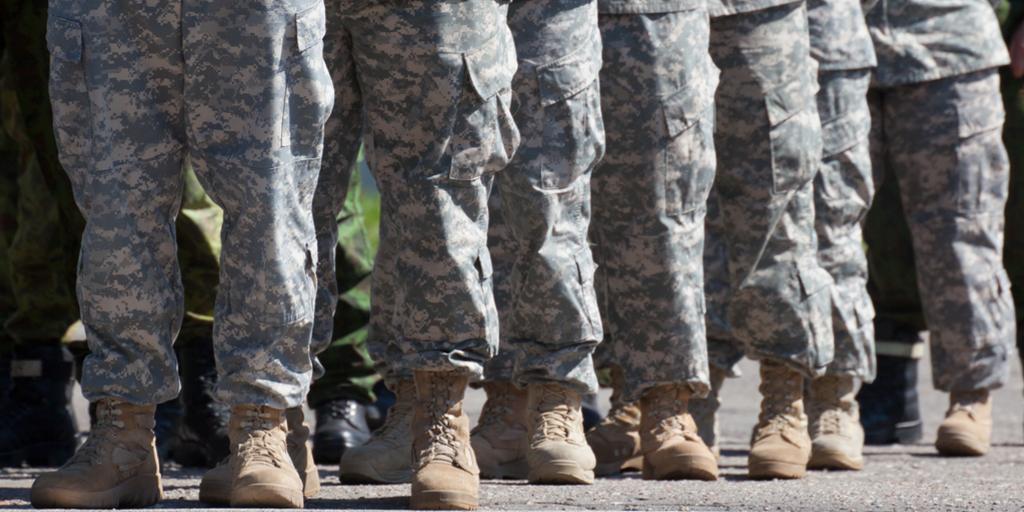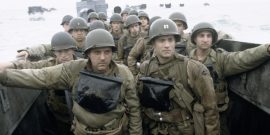How should we assess the democratic way of war on Memorial Day?
Being Ready to Restore Order Is Crucial to Winning Wars, but the Real Question Is: Should We Fight Them?
In these days of permanent undeclared war, one of the key tasks defenders of liberty face is to find ways to reinvigorate limits on the national security state. This is especially difficult because the American public has simply gotten used to the idea that U.S. forces will always be in harm’s way, somewhere, and the country’s political class doesn’t seriously consider ways to limit commitments abroad.
American strategists have an enduring love for the clean victory. We aspire to wage honorable wars aiming at a swift, overwhelming defeat of enemy forces, followed by a rapid return home. There’s a seductive logic to this ideal: it at least has the virtue of identifying a clearly desirable end to the violence. Yet the last hundred or so years of military history shows that this is an aspiration better suited to the European wars of the 17th and 18th centuries, where small professional armies danced around one another, never seeking absolute decision in the field. Under those very limited conditions, it made sense for nations to submit to the verdict of battle. They lost relatively little in the process.
If only the post-1789 reality were more cooperative, then the aspirational war-limiting strategies of Colin Powell, Caspar Weinberger, and their many forebears might actually work. But in the modern era, the United States military has almost always found itself responsible for the occupation and rebuilding of defeated powers. Any study of American military strategy should place this point front and center, yet time and again, politicians and their advisors fail to reckon with the extended costs of war.
Nadia Schadlow’s War and the Art of Governance makes a compelling case that the American military professionals in general and the U.S. Army in particular suffer from a serious case of denial about the political character of war. Instead, the military and civilian leadership of U.S. armed forces have tended to cultivate plans that emphasize annihilating the enemy through technological prowess without much consideration of what happens after the major combat is complete.
This pattern repeats itself so often in U.S. history that Schadlow labels it “American denial syndrome.” She argues that it is defined by a recurring set of defects in how we understand war and what comes after:
The four themes that shape this denial syndrome—discomfort in a democracy with the idea of the military taking the lead in political activities, American concerns about colonialism, the view that civilians could take the lead in governance operations, and traditional views about what constituted war and the military profession—created continuous tensions as the United States planned or and executed its major wars.
These come together and make us unable to consolidate success on the battlefield into political success in the years to come. This is a powerful diagnosis of American strategy and foreign policy thought, one that offers a pointed reminder that the military, too, is a bureaucracy. And in the process, Schadlow offers a detailed confirmation of the common American sense that we regularly win wars but lose the peace.
The book identifies what she terms “governance operations” as the critical point of failure in most of America’s wars. By this Schadlow means a wide range of functions, but assigns special importance to the restoration of law and order in places held by U.S. forces, the rebuilding of essential infrastructure, and helping with the cultivation or renewal of a civil society that can support a new political order. Not without strong historical reasons, American military professionals have viewed these as inherently political and therefore civilian concerns. The trouble Schadlow identifies is that civilians cannot handle the job.
As a result of this default position, the U.S. Army delayed the creation of institutions that could handle these kinds of missions, and even after their creation, consistently treated them as a secondary or tertiary function of the service. This continues today: the lion’s share of civil affairs units are located in the military’s reserve components, and the largest active-duty formations reside institutionally in the U.S. Special Operations Command alongside psychological operations units. Schadlow emphasizes the ways that situating civil affairs here is telling: although many advocates of preparing for governance operations were excited about their affiliation with special operators, “it essentially codified” the view that being prepared to maintain and restore order was largely unimportant to the “real” Army.
Schadlow argues this is a terrible mistake, one that leads to crude prewar planning and the allocation of very few resources to the tasks of restoring order and providing for those affected by U.S. wars. Worse still, the Army has regularly attempted to divide authority for civil affairs projects across combat-oriented commands and military government units. But the central difficulty she observes is that the Army betrays a persistent institutional failure to build the capacity to pick up the pieces after most of the shooting stops.
The book’s account of these confused lines of communication and authority reaches tragic proportions in her case study of Iraq and Afghanistan. Generals trained to embrace Colin Powell’s doctrines of decisive war and rapid return home were extremely reluctant to take responsibility for post-combat operations, and as she puts it particularly in Afghanistan, “some senior military leaders believed they could avoid the politics of the conflict.” In Iraq, the prewar planning assumed there would be distinct phases of the operation, and that there would be a clear and distinct time where civil affairs professionals could take over from combat units.
The truth was far messier: just as in World War II, infantry units in Iraq regularly were forced – usually without explicit directives – to improvise solutions to local civilian crises in the areas they controlled. Often this happened while they were fighting insurgents emboldened by the U.S. failure to immediately restore public order.
Throughout the book, Schadlow largely remains neutral about questions of grand strategy. She is less concerned with the questions of ends than she is of means. But she offers an extremely pointed criticism of the nation’s leadership when it comes to contemplating those means:
When criticized concerning the US Army’s unpreparedness for aspects of the intervention in Iraq, former secretary of defense Donald Rumsfeld made the oft-quoted observation that “you go to war with the Army you have.” The question is, why do we have the army we have?…. Civilian and military reluctance to acknowledge the requirement for governance operations as a fundamental dimension of war has resulted in a denial syndrome that precludes effective war planning and perpetuates unpreparedness for this aspect of war.
She suggests that this refusal to take preparing for governance as seriously as preparing for direct combat amounts to professional malpractice, and makes a number of recommendations for improving the situation.
Some of Schadlow’s recommendations obviously follow from the history she presents. Unity of command is crucial, as is not trying to send civilians to do the work of establishing order in wartime chaos. More profoundly, she points to the need to recognize the intrinsically political nature of war, and quit pretending that soldiers can hand their political roles off to civilians. She emphasizes that civilians must generate the grand strategy of a nation, but soldiers cannot simply ignore the political dimensions of their operations on the ground, and should ask Congress to fund the creation and maintenance of units that can do the work of public order.
Insofar as we simply want to discuss what works to win in post-war politics, this is all well and good. This is a peculiar book in that what you take away from it probably depends on what you think U.S. grand strategy should look like in the world. It offers ammunition to interventionists and advocates of restraint alike.
Schadlow draws attention to an old concern in military planning: if you build a capability, it often gets used. When it comes to occupation work, she suggests that generations of American leaders have tried to avoid taking the nation into such work by simply being unprepared for it. She argues this is the wrong approach because “the propensity not to plan or size forces for stability operations increases the possibility of ‘prolonged operations.’” Her point is that American presidents have regularly opted for war whether or not the military was ready for what comes after the shooting stops, and she seems to be advocating a practical path forward in light of official Washington, D.C.’s view of reality.
Taken at face value, this book is simply an argument in favor of developing certain military capacities before the next war, so the U.S. can win the peace as well as the war. But the evidence Schadlow presents also suggests a different interpretation: American politicians should never contemplate the use of force without a complete accounting of what will happen next, and in the absence of a strong case that a war and an occupation is in the nation’s most vital interests, they shouldn’t go to war.
War and the Art of Governance offers an important reminder that America’s political amnesia isn’t just domestic: it’s present in the country’s international dealings, too. And we’d be wise to remedy it before it destroys what’s left of the republic.



